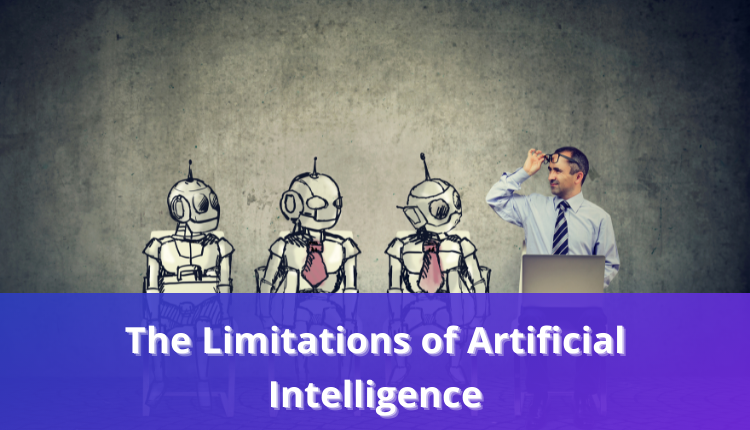Artificial intelligence is no longer just a thing that appears in science fiction movies. Over the past few decades, artificial intelligence, or AI, has become deeply integrated into our everyday lives. News headlines proclaim the automation of jobs in fields from healthcare to manufacturing. AI can post job ads, analyze facial expressions, predict market outcomes, and order toilet paper when you’re about to run out. Even fields like writing, translation, and editing, where the need for human eyes is widely recognized, are introducing AI to help automate tedious and repetitive tasks. The integration of AI so thoroughly into our everyday lives has some wondering whether AI has already exceeded the human capacity to perform these tasks. Are there still areas where humans excel and AI falls behind? And is it only a matter of time before AI exceeds human capacity in every field? Let’s take a look at where AI is growing, what its limitations are, and what we can expect in the future.
Table of Content:
Is AI Really all around us?
When you think of artificial intelligence, you might be thinking of talking robots performing services or making complex calculations. But AI is actually much more ordinary. Often, AI simply takes the form of a computer algorithm. The difference between AI and non-AI algorithms is that non-AI algorithms can only perform tasks that they have been explicitly taught to do, while AI is programmed to be able to “learn.” AI works to imitate human intelligence, thought, and patterns. One well-known way to measure the “humanness” of an AI is called the Turing test, after its inventor, Alan Turing. The Turing test sees whether a person can tell the difference between an AI and a human during an interaction.
You have probably encountered AI in your life, and you might even use it every day. Smartphones and digital assistants like Siri or Bixby are AI, and so is Amazon’s Alexa. Many websites offer chatbot assistants to answer basic questions, and these assistants are powered by AI. Online writing tools that improve the quality of your writing as you go, like Trinka, are also increasingly popular. Natural language processing, a field in which AI uses datasets of language to learn patterns and understand how humans communicate, is the foundation of these tools. Deep learning, neural networks, and cognitive computing are other ways in which AI learns and processes information.
The Pros and Cons of AI
AI can be a wonderful tool, but of course it also has its flaws. AI can help reduce or even eliminate human error. If AI is programmed well, its algorithms can produce error-free work. In addition, unlike humans, AI doesn’t need to rest. AI is capable of working and learning 24/7 and can save people time, effort, and money. AI is particularly well-suited for tedious tasks like data crunching that humans both dislike and are error-prone towards. But more than that, AI is capable of some startling innovations already. The Massachusetts Institute of Technology (MIT) invented a deep learning AI model that is able to predict breast cancer up to five years in advance of conventional detection methods. AI is also being used in the medical field in both drug development and discovery.
Some argue that AI offers the advantage of unbiased decision making. For example, many employers like to use AI to screen resumes with the assumption that AI will not have the same biases that humans do. However, note that while AI can seem objective because it is a computer program, computer programs are still ultimately created by humans. AI programs in particular are only as good as the datasets that they have to work with. Because of this, AI is only as unbiased as its creators and the datasets that it uses to learn from. The potential bias of AI isn’t limited to the world of corporate recruiting. One rather infamous example of AI gone wrong was the creation of Tay, an AI chatbot that interacted on and learned from Twitter. In less than 24 hours, Tay was tweeting racist, sexist, and obscene comments. This is because Twitter is full of such comments, and Twitter users also directed those comments at Tay to reinforce the negative feedback loop.
So What are Humans Better at than AI?
It may seem as though humans will quickly be outpaced in fields where AI is becoming more heavily integrated. However, humans still have the capacity to perform a number of complex tasks better than AI. Tasks which require creativity still tend to be beyond the grasp of AI programs for now. One writer used AI to create new scripts for episodes of the TV show Friends—all of which turned out to be completely impossible to read. While some writers are turning to AI writing tools for inspiration for fiction and poetry, AI falls short of the ability to do all of the work for them. In addition, while natural language processing has made great leaps forward, AI is still not very good at really understanding the words that it reads. While language is often predictable enough that AI can engage in reliable dialogue in certain situations, it can be confused by unexpected wording, sarcasm, or nuance. In a similar vein, AI cannot yet perform empathy or critical thinking. Humans continue to excel at tasks which require these skills compared to AI.
AI has developed quickly and become a vital part of our everyday lives. However, the day in the future when AI does everything for us and we can spend our days relaxing or studying for pleasure is still a long way off. AI still needs to improve in the areas of language processing and creativity, as well as problem-solving and understanding of nuance. If you’re worried that the robots are coming for your job, cultivate these skills in yourself to ensure that you can still be employable into the future.

